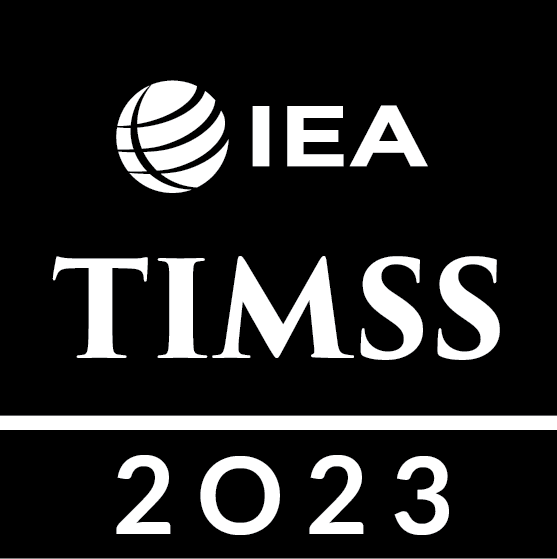Relative Achievement in Mathematics Content Domains
Exhibit 1.2.13 shows countries’ average achievement in each of the four mathematics content domains relative to their overall average achievement (presented from highest to lowest overall average achievement as the default sort). The exhibit also highlights differences based on a test of statistical significance between the average domain score and the overall mathematics score using an alpha level of 0.01. A smaller alpha level was used to flag statistical significance of subdomain differences to reduce the number of false positives that can be expected due to multiple comparisons across multiple countries and dependent sub-scores. Differences are computed for each student and averaged across the country, rather than comparing different groups of students as in previous exhibits in this section. This within-student dependency leads to considerably smaller standard errors (given in parentheses and reported together with the estimates in the exhibit).
Of the 40 participating countries for which mathematics content domain scores were estimated with internationally comparable data, 14 had a relative strength in number and 11 had a relative weakness; 16 had a relative strength in algebra and 12 had a relative weakness; 10 had a relative strength in geometry and measurement and 17 had a relative weakness; and 13 had a relative strength in data and probability and 23 had a relative weakness.
Read More
Exhibit 1.2.13: Relative Achievement in Mathematics Content Domains
▲ ▼ Subscale score significantly different than overall score (p < 0.01)
Numbers of items are based on the TIMSS 2023 eighth-grade mathematics items included in scaling.
( ) Standard errors appear in parentheses. Because of rounding some results may appear inconsistent.
See Appendix B.7 for population coverage notes 1, 2, and 3. See Appendix B.10 for sampling guidelines and sampling participation notes †, ‡, and ≡.
Ψ Reservations about reliability because the percentage of students with achievement too low for estimation exceeds 15% but does not exceed 25%.
Ж Average achievement not reliably measured because the percentage of students with achievement too low for estimation exceeds 25%.
A dash (-) indicates comparable data not available because average achievement could not be accurately estimated.
New Zealand did not satisfy guidelines for minimum school participation rates. Achievement could not be reliably estimated for Cote d’Ivoire.
Scroll Up
